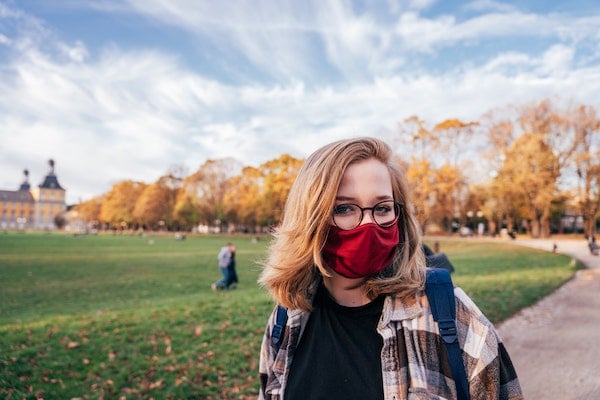Published on
Social Distancing and the Student Experience

For institutions with on-campus or hybrid courses this fall, we experienced a socially distanced school day. Our days are full of hand sanitizer, sanitary wipes, facial coverings, staying six feet apart, and regular tests. Some institutions have opened and have not made it very far. They had to opt in, pivot, or toggle (Bryan Alexander’s coined term) to online instruction. Many institutions have also been successful due to extreme vigilance.
A day in the life of a socially distanced college school day may look something like this: you must follow CDC guidelines to ensure the health and safety of everyone involved–students, faculty, and staff. Many institutions also have to adhere to the guidelines that have been implemented by the cities, towns, and states in which they operate as well as institutional guidelines. Everyone must wear a facial covering. That is something that many are used to now, but the vast majority have never worked, taught or attended class with a facial covering on before. I personally teach with a one. My classes are three hours long, and I have to break frequently. I am able to stand behind a plexiglass shield that was installed on the desk, and I can remove my mask. It certainly makes things more comfortable. Everyone must be tested and tested frequently to ensure the health and safety of everyone at your institutions. I am personally tested for COVID-19 every ten days. Students are tested more frequently. We must download an app on our phones that assists with identifying testing and compliance. One must show their app to the officer at the door of every building before entering, and students must show it to their faculty member once they are in the class as well. We must all use sanitizing wipes to clean off all surfaces we encounter. Students must wipe down their desks and chairs and faculty must wipe down the desk, podium, keyboard, and mouse. And, don’t forget, we must all be six or more feet apart, so classrooms have had to be reduced in capacity.
As a result, many of our traditional face-to-face classes have been transformed into hybrid or high-flex classes for instruction. A class of 24 students has to be divided in half. Twelve students will sit six feet or more apart in the classroom, and the other twelve students will attend remotely. Then the students will switch the following week. The instructor must teach the class in this fashion as well. There could be a potential impact on student retention and success. Students could likely get confused as to when they need to attend class online or on campus. Some students may also have issues being successful in online or hybrid classes. They are not a good fit for all students. Plenty of training has to be provided and plenty of training continues to be provided at many institutions to ensure sure both faculty and students are prepared and well versed in this modality.
For all of the students not suited to a hybrid modality, there will likely be a large volume for whom hybrid teaching is a good fit. What I have seen thus far is that the students are liking the hybrid model. Many have spoken to me about keeping all of their classes in a that modality moving forward. This could create a major paradigm shift in higher education. Colleges and universities will have to potentially change their course delivery to accommodate emerging student need.
Beyond classrooms, we must also be wary of high-traffic areas, such as residence halls, dining halls, and the library. Capacity in the residence halls also had to be reduced, resulting in quads being transformed into two doubles. Doubles and triples were reduced to singles. Doing the right thing unfortunately also means reducing revenue as a result. Dining halls also had to have reduced capacity dining. Tables that once held eight to ten students are now seating only four with plexiglass dividers between them. The same goes for library tables. Additional study space had to be found or created to accommodate student demand.
The changes to certain student services are impacting the student experience. Many of these services have gone online, but again, some students find online services such as library and tutoring to not be a good fit for them. However, some students may find the online student services more convenient. Also, colleges and universities may have to invest in more online student services for the future, potentially creating another major paradigm shift in higher education moving forward.
Lastly, who must police this process to ensure the health and safety everyone involved? There may be officers and/or instructors at building and classroom entrances checking the phone app I mentioned above. It is everyone’s duty to police this process to make sure we all adhere to the guidelines set forth by our institutions. If everyone does their part in making sure the policies are followed, we could have a somewhat safe semester with very few students, faculty, and staff testing positive with the terrible virus. It appears to me that everyone is very happy to return to campus. We need to keep it that way! If we don’t adhere to the policies set forth, some institutions could suffer extreme financial setbacks that may result in them closing down. I don’t think any of us want that to happen to our institution. PLEASE WASH YOUR HANDS FREQUENTLY and WEAR A MASK. Now onto the 2021 spring semester.
Disclaimer: Embedded links in articles don’t represent author endorsement, but aim to provide readers with additional context and service.
Author Perspective: Administrator



